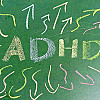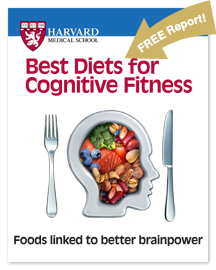
Zinc: What it does for the body, and the best food sources

Respiratory health harms often follow flooding: Taking these steps can help

Tips to leverage neuroplasticity to maintain cognitive fitness as you age

Can white noise really help you sleep better?

Celiac disease: Exploring four myths

What is prostatitis and how is it treated?

What is Cushing syndrome?

Exercises to relieve joint pain

Think your child has ADHD? What your pediatrician can do

Foam roller: Could you benefit from this massage tool?
Exercise & Fitness Archive
Articles
Walking: Your steps to health
Exciting benefits of walking for heart health, including lower risk of heart attack and stroke
Why should you start walking for heart health? Walking doesn't get the respect it deserves, either for its health benefits, its value for transportation, or its role in recreation.
Aerobics, walking and health
Ever since the 1970s, the aerobic doctrine has dominated the discussion of exercise and health. In a scientific update of your high school coach's slogan "no pain, no gain," the doctrine holds that the benefits of exercise depend on working hard enough to boost your heart rate to 70% to 85% of its maximum, sustaining that effort continuously for 20 to 60 minutes, and repeating the workout at least three times a week.
Get moving to slow cardiovascular aging
Keep your heart strong and young by giving it a good, regular workout.
Image: © JohnnyGreig/Getty Images
Your heart, like any other muscle, can weaken over time, especially if you are sedentary. As you age and become less active, the muscle in your heart's left ventricle — the chamber that pumps oxygen-rich blood back out to the body — becomes stiffer.
"This change in the heart muscle, coupled with simultaneous stiffening of the body's arteries that leads to high blood pressure, begins a harmful cardiovascular aging cycle," says Dr. Aaron Baggish, director of the Cardiovascular Performance Program at Harvard-affiliated Massachusetts General Hospital. "Without intervention, this sets the stage for heart failure later in life."
Moving away from knee osteoarthritis
Men may avoid activity because of their knee pain, but movement is exactly what they need.
It is perhaps the ultimate exercise catch-22: it's hard to move with knee osteoarthritis, but moving helps relieve osteoarthritis knee pain.
More than 30 million Americans have osteoarthritis, the most common kind of arthritis. While osteoarthritis can affect the hips, lower back, neck, and fingers, it occurs most often in the knees. In fact, an estimated 10% of men ages 60 and older have symptoms of knee osteoarthritis.
Moving away from knee osteoarthritis
Men may avoid activity because of their knee pain, but movement is exactly what they need.
It is perhaps the ultimate exercise catch-22: it's hard to move with knee osteoarthritis, but moving helps relieve osteoarthritis knee pain.
More than 30 million Americans have osteoarthritis, the most common kind of arthritis. While osteoarthritis can affect the hips, lower back, neck, and fingers, it occurs most often in the knees. In fact, an estimated 10% of men ages 60 and older have symptoms of knee osteoarthritis.
The safe way to do yoga for back pain
The popular mind-body practice can be one of the best ways to soothe an aching low back, as long as you are careful.
Image: © FatCamera/Getty Images
Yoga is a gentle practice that is ideal for maintaining back strength and flexibility. It's also one of the more effective tools for helping reduce low back pain, the most common source of pain and disability among older adults.
"Yoga helps strengthen and stretch back muscles that might be tight, which improves mobility," says Dr. Lauren Elson, medical editor of the Harvard Special Health Report An Introduction to Yoga (www.health.harvard.edu/yo).
Effective exercises for osteoporosis
The ideal workout program for osteoporosis combines weight-bearing, muscle-strengthening, flexibility, and balance exercises.
Smartphone apps and trackers may help boost physical activity
Research we're watching
Surveys show that about one in five Americans uses a smartphone app or tracker for monitoring exercise. Evidence for the benefits of these tools is mixed, but a new review suggests they may encourage people to move a bit more.
Researchers pooled findings from 28 studies involving a total of nearly 7,500 people who took part in studies using a smartphone app or activity tracker. They found that these tools have a small to moderate effect in boosting physical activity, motivating people to take an average of 1,850 additional steps per day.
Five health habits may help keep acid reflux at bay
Research we're watching
Lifestyle changes may help to prevent symptoms related to gastroesophageal reflux disease (GERD), according to a research letter published online Jan. 4, 2021, by JAMA Internal Medicine.
Using data from the Nurses' Health Study II, a nationwide study that included 116,671 women, researchers found that among 9,000 women who had GERD symptoms, those who met five specific anti-reflux lifestyle criteria were 40% less likely to have GERD symptoms than women who did not meet any of them. These were having a normal body weight; never smoking; participating in 30 minutes of moderate or vigorous exercise each day; drinking no more than two cups of coffee, tea, or soda each day; and following a healthy diet. GERD symptoms were defined as reporting acid reflux or heartburn at least once a week.
The best core exercises for older adults
Strengthening your core will rev up your balance and stability.
After a long winter with lots of isolating and maybe too little physical activity, it might be time to give your core muscles more attention.
These muscles, located throughout much of your trunk, are the key to supporting your lower back and helping you stand, get out of a chair, bend, lift, and maintain your balance. So regular maintenance and tune-ups of the core muscles are important.

Zinc: What it does for the body, and the best food sources

Respiratory health harms often follow flooding: Taking these steps can help

Tips to leverage neuroplasticity to maintain cognitive fitness as you age

Can white noise really help you sleep better?

Celiac disease: Exploring four myths

What is prostatitis and how is it treated?

What is Cushing syndrome?

Exercises to relieve joint pain

Think your child has ADHD? What your pediatrician can do

Foam roller: Could you benefit from this massage tool?
Free Healthbeat Signup
Get the latest in health news delivered to your inbox!
Sign Up











